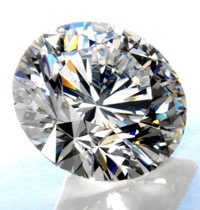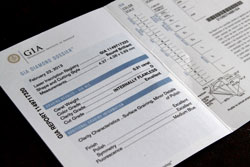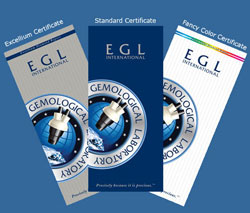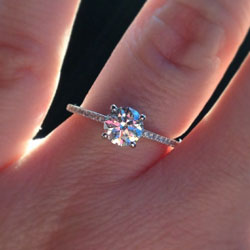Confused about diamond grading certificates and what all the paperwork means?
Shopping for a diamond requires a lot of research in order to understand what you will get for your money. Many factors affect the price of a diamond and one of those factors is the type of diamond certificate that accompanies the diamond.
Many clients ask us is there any difference between laboratory certificates. Sometimes it is confusing for a client to compare two diamonds of identical grades that have been graded by two different laboratories. They may not physically look the same even though they have the same technical grading on paper. One diamond will invariably cost more than the other. So why is this so? The reason is due to grading subjectivity and different grading systems.

Firstly, it is important to clarify what a certificate is, and to what purpose should it be used for.
A laboratory certification is made for the purpose of identifying a loose diamond and assigning a grading based on the classification of specific physical and optical properties.
A diamond certificate or report from a diamond laboratory is a scientific review of the diamond’s properties. Most certificates will cover the following:
Diamond Physical properties:
- Nature of gemstone (ie that it is a natural diamond)
- Diamond weight
- Diamond measurements
- Proportions
- Angles
- Symmetry of facets
Different diamond laboratories use different methods to determine these gradings,.
Whilst the terminology is the same between laboratories, the standards of grading are different. Whilst most laboratories would agree on the weight and physical measurements of the diamonds, the more subjective grades of colour and clarity can vary.
It is common knowledge that EGL, IGI and HRD diamond laboratories are more generous in their grading than the GIA diamond laboratory – meaning that these labs have wider tolerances when grading the diamond.

It is our experience that there is a tendency to be one, two or even three grades different in colour grading between EGL and GIA’s colour grading system. There is also usually a difference in the clarity grading standards between laboratories. Other grading aspects like polish, symmetry and fluorescence can vary too, but (in most cases) it is the colour that impacts the most visible difference.
For example, a diamond that received a colour grading of E colour from an EGL, IGI or HRD might be graded as a G colour by GIA. As a result, GIA certified diamonds are widely considered more credible as the grading is quite strict and consistent. This gives the consumer added confidence that they are not buying an otherwise inflated grade of diamond.

However there is a benefit to choosing an EGL, IGI or HRD graded diamond and that is the lower price, when compared to that of an identically graded diamond from the GIA laboratory. This is seen as an advantage to those consumers who consider the ratings on a certificate to be a priority over the look of the diamond!
Diamond grading is a subjective skill, not a science. And optical beauty is very subjective and personal. This is why it is important to physically inspect the diamond, regardless of the certification.

And remember, when you buy a diamond, you should buy the diamond for its own beauty, not for its certificate!
For further information about certified diamonds, please contact our Westfield Boutique.

